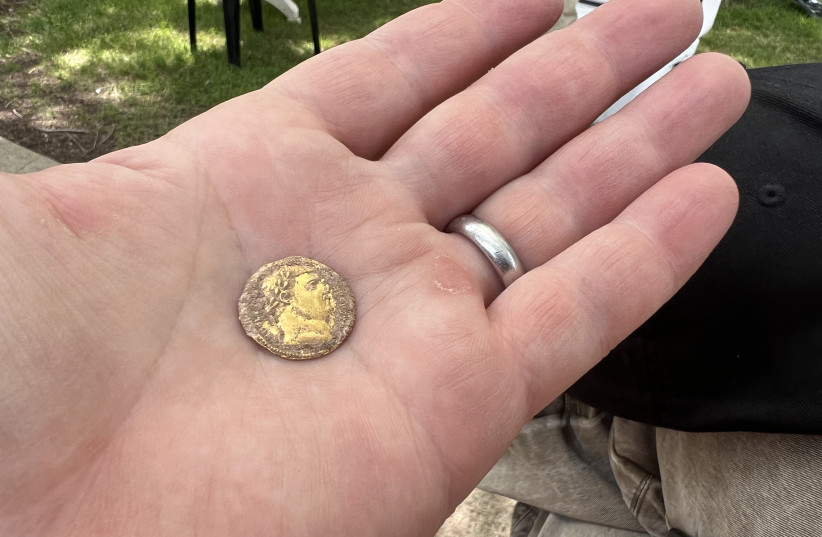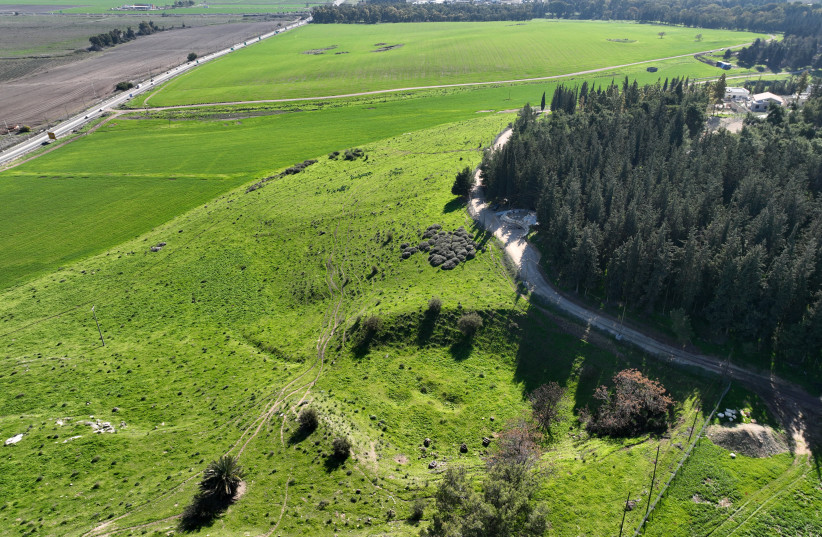 First Roman military amphitheater in Southern Levant revealed at excavations near Megiddo
First Roman military amphitheater in Southern Levant revealed at excavations near Megiddo
JUDITH SUDILOVSKY
Less lavish than amphitheaters for the civilian population, the military amphitheaters were used for training and entertainment by the troops.
.

Archaeologists excavating at the base of the Legio VI Ferrata Roman Legion near Megiddo (known as Legio) believe they have found evidence of the first military amphitheater to be identified in the Southern Levant.
While remains of over 230 Roman civilian amphitheaters have been found throughout what was the territory of the Roman Empire, fewer military amphitheaters have been excavated, and most of those are in the western regions of the empire.
“Military amphitheaters are connected to the military and not to a city. We know of examples of military amphitheaters in the western regions of the Roman Empire such is in Germany, France and Spain, but they are not known in the eastern half of the Empire. This structure is a few hundred meters from the military base.”
Dr. Yotam Tepper, Israel Antiquities Authority consultant
“We know of examples of military amphitheaters in the western regions of the Roman Empire such is in Germany, France and Spain,” he continued, “but they are not known in the eastern half of the Empire. This structure is a few hundred meters from the military base.”

Tepper co-directs the excavations at Legio excavations with Matthew J. Adams, director of the W.F. Albright Institute of Archaeological Research in Jerusalem, and Susan Cohen, archaeologist at Montana State University.
The archaeological project at Legio is conducted under the auspices of the Jezreel Valley Regional Project. The amphitheater is one of several parts of the excavation of the base of the Roman Sixth Legion that was stationed here from the second to third centuries CE. The excavation of the amphitheater there is being supervised by Mark Letteney from the University of Southern California. The nearby Kibbutz Megiddo has also been providing strategic assistance.
History of Meggido / Legio
The area had a vibrant community, and the Roman Legion’s military camp shared the area with a Jewish village as well as with a Roman-Byzantine city.
Several excavations teams have worked at the site over the years, starting in 1902 by Gottlieb Schumacher on behalf of the German Society for Oriental Research. Schumacher – after discovering two stone stairs, one stone seat and several other architectural elements – decided that a bowl-like depression in the wadi near Megiddo had been the site of an eastern-facing theater.
However, because of the more elliptical shape of the crater, the current excavating team believed what lay underneath was actually a military amphitheater where spectators sat all around a flat-surfaced arena in a seating area called the cavea.
IN THE FIRST excavation of this area of Legio since Schumacher’s initial foray, the team excavated an area of almost 250 square meters in archaeological sections revealing parts of the flattened arena, remains of ramps made from layers of dirt and rock that would have supported the cavea, and two sections of the outside supporting wall. They have just begun to uncover the stone wall of the entrance gate to the amphitheater. In addition, they found remains of what appears to have been stone seats, said Tepper, who also uncovered parts of stone seats during excavations for his master’s degree in 2003.
They also found a gold coin from the reign of Roman Emperor Diocletian from 294 CE.
The architecture of the ancient amphitheater
The arena of the amphitheater would have been 50-70 meters (164-230 feet) long and the seating area some eight to nine meters high, said Tepper.
Their work has been made more difficult, noted Tepper, because the stones from the structure were used as building material by the subsequent inhabitants of the area, including residents of a nearby Ottoman-era village on to personnel of a British military camp.
“The main question we were looking to answer was if the bowl shape we were seeing on the ground was actually an amphitheater, and basically we have proved it,” said Adams. “We have determined the shape is artificially made… it looks like they flattened the entire area down to a natural clay source that was already there. Just today we are starting to see monumental stones from the entrance into the amphitheater gate, which is nice and promising because it is clear that at least the foundation of the wall is there.”
“Just today we are starting to see monumental stones from the entrance into the amphitheater gate, which is nice and promising because it is clear that at least the foundation of the wall is there.”
Matthew J. Adams
Compared to the elaborate amphitheaters used for the civilian population, military amphitheaters were a more rustic affair, he said, with wooden seating and a less lavish setting.
How was the amphitheater built?
Located near the Roman military camp, the amphitheater would have been built by the manual labor of the soldiers with picks and hoes, said Adams. It was used as both a training ground for soldiers as well as for “entertainment” for the troops such as gladiator battles and animal fights.
“We tend to think of an army in the modern sense but soldiers of the Roman Legion played a lot of roles including local police, builders and engineers,” he said, noting the Sixth Roman Legion from Megiddo helped build part of the Caesarea aqueduct.
Israel’s archeological richness
Israel boasts three Roman amphitheaters, in Caesarea, Bet She’an and Beit Guvrin. While some scholars maintain that the amphitheater in Beit Guvrin was also used for military purposes, Tepper and Adams believe that its location within the city indicates that it was more than likely mainly used for the population of the city.
“[Located just outside the military camp], our amphitheater is very much connected to the legion,” said Adams. “It gives us another dimension to the experience of the soldier outside the formality of the base itself. With every new find, we see different parts of their lives. In the excavation of the headquarters, we can imagine the generals planning and the troops gathering. In the barracks, we see their cooking pots where they prepared their meals. And now the amphitheater is the place where we know they were spending a lot of time as a legion training and also doing leisure activities.”
Zawartość publikowanych artykułów i materiałów nie reprezentuje poglądów ani opinii Reunion’68,
ani też webmastera Blogu Reunion’68, chyba ze jest to wyraźnie zaznaczone.
Twoje uwagi, linki, własne artykuły lub wiadomości prześlij na adres:
webmaster@reunion68.com
